#also mesa Colorado
Text

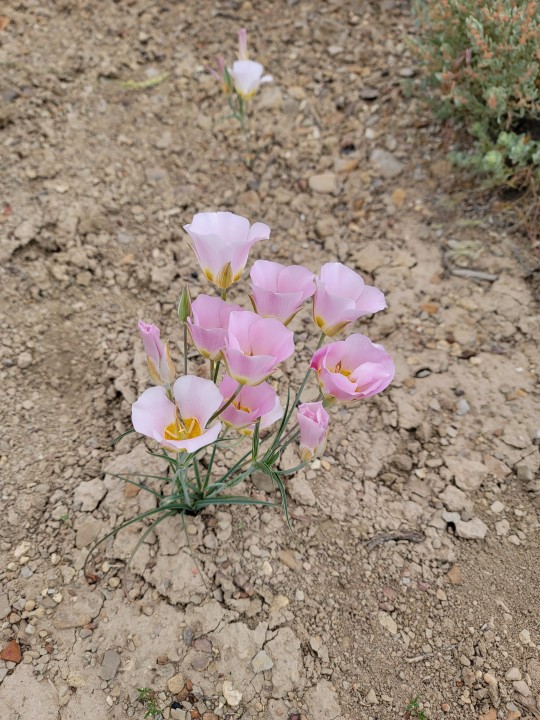
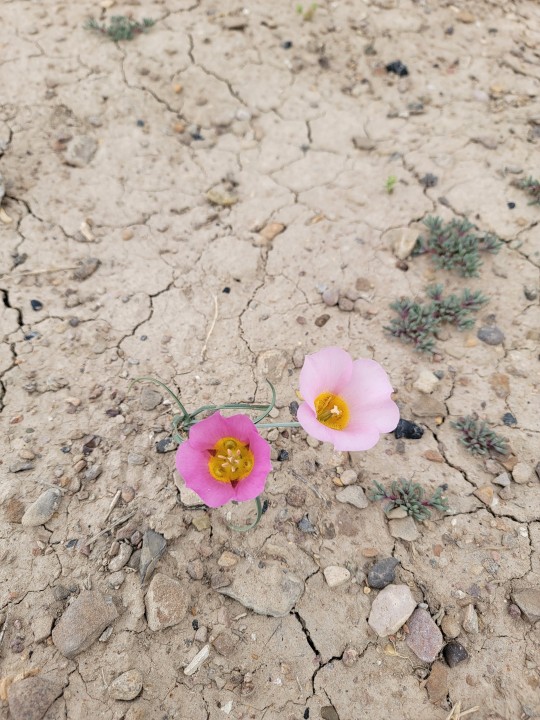
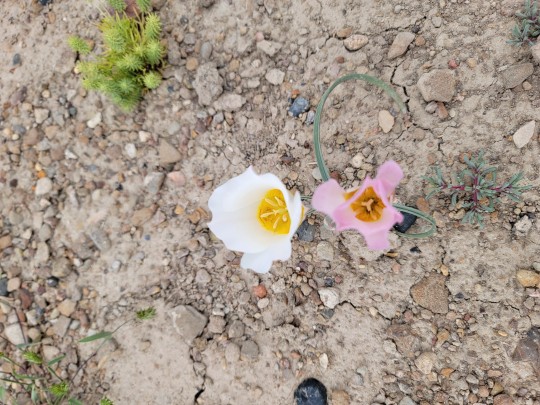
Cisco Mariposa - Calochortus ciscoensis
My first opportunity documenting a rare species on this blog! The Cisco Mariposa was only known to common science in 2008 and can only be found in 2 eastern counties in Utah and Mesa County Colorado. This curious desert flower is a member of the lily family, coming up around late spring-early summer from a perennial bulb, flowers vary from white to several shades of pink.
The Calochortus genus is common throughout west, there are many minor species and regional variants, the Cisco Mariposa was found to be distinct from the Sego lily due to the presence of curled leaves at the presence of flowers and less prominent chevrons (see image 2). Since this species is new to science, little literature is written regarding the reciprocal relationships people have had with this plant.
Using the sego lily (C. nuttali) as an example, I will suggest propagating this plant is possible by separating new bulbs from the main bulb and replanting them in gravelly soil with good drainage. For the Sego Lily both indigenous peoples and settlers have a history of utilizing the bulb as a food source, I'm uncertain if the chemical makeup of the Cisco Mariposa is the same so I will research that a bit more!
#cisco Mariposa#Calochortus ciscoensis#native plants of utah#american southwest#native plant profiles#utah#also mesa Colorado
12 notes
·
View notes
Note
Hey, would you be willing to elaborate on that "disappearance of the Anasazi is bs" thing? I've heard something like that before but don't know much about it and would be interested to learn more. Or just like point me to a paper or yt video or something if you don't want to explain right now? Thanks!
I’m traveling to an archaeology conference right now, so this sounds like a great way to spend my airport time! @aurpiment you were wondering too—
“Anasazi” is an archaeological name given to the ancestral Puebloan cultural group in the US Southwest. It’s a Diné (Navajo) term and Modern Pueblos don’t like it and find it othering, so current archaeological best practices is to call this cultural group Ancestral Puebloans. (This is politically complicated because the Diné and Apache nations and groups still prefer “Anasazi” because through cultural interaction, mixing, and migration they also have ancestry among those people and they object to their ancestry being linguistically excluded… demonyms! Politically fraught always!)
However. The difficulties of explaining how descendant communities want to call this group kind of immediately shows: there are descendant communities. The “Anasazi” are Ancestral Purbloans. They are the ancestors of the modern Pueblos.
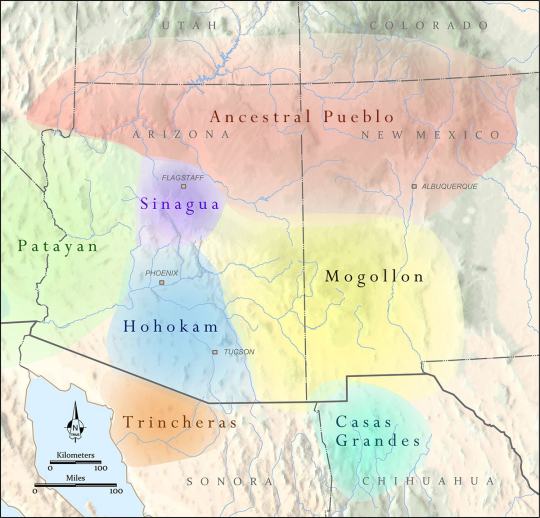
The Ancestral Puebloans as a distinct cultural group defined by similar material culture aspects arose 1200-500 BCE, depending on what you consider core cultural traits, and we generally stop talking about “Ancestral Puebloan” around 1450 CE. These were a group of people who lived in northern Arizona and New Mexico, and southern Colorado and Utah—the “Four Corners” region. There were of course different Ancestral Pueblo groups, political organizations, and cultures over the centuries—Chaco Canyon, Mesa Verde, Kayenta, Tusayan, Ancestral Hopi—but they generally share some traits like religious sodality worship in subterranean circular kivas, residence in square adobe roomblocks around central plazas, maize farming practices, and styles of coil-and-scrape constructed black-on-white and black-on-red pottery.
The most famous Ancestral Pueblo/“Anasazi” sites are the Cliff Palace and associated cliff dwellings of Mesa Verde in southwestern Colorado:

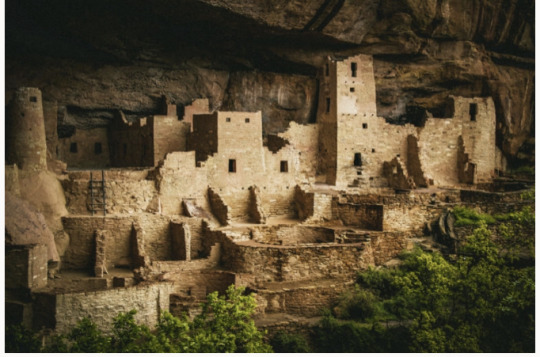
When Europeans/Euro-Americans first found these majestic places, people had not been living in them for centuries. It was a big mystery to them—where did the people who built these cliff cities go? SURELY they were too complex and dramatic to have been built by the Native people who currently lived along the Rio Grande and cited these places as the homes of their ancestors!
So. Like so much else in American history: this mystery is like, 75% racism.
But WHY did the people of Mesa Verde all suddenly leave en masse in the late 1200s, depopulating the whole Mesa Verde region and moving south? That was a mystery. But now—between tree-ring climatological studies, extensive archaeology in this region, and actually listening to Pueblo people’s historical narratives—a lot of it is pretty well-understood. Anything archaeological is inherently, somewhat mysterious, because we have to make our best interpretations of often-scant remaining data, but it’s not some Big Mystery. There was a drought, and people moved south to settle along rivers.
There’s more to it than that—the 21-year drought from 1275-1296 went on unusually long, but it also came at a time when the attempted re-establishment of Chaco cultural organization at the confusingly-and-also-racist-assuption-ly-named Aztec Ruin in northern New Mexico was on the decline anyway, and the political situation of Mesa Verde caused instability and conflict with the extra drought pressures, and archaeologists still strenuously debate whether Athabaskans (ancestors of the Navajo and Apache) moved into the Four Corners region in this time or later, and whether that caused any push-out pressures…
But when I tell people I study Southwest archaeology, I still often hear, “Oh, isn’t it still a big mystery, what happened to the Anasazi? Didn’t they disappear?”
And the answer is. They didn’t disappear. Their descendants simply now live at Hopi, Zuni, Taos, Picuris, Acoma, Cochiti, Isleta, Jemez, Laguna, Nambé, Ohkay Owingeh, Pojoaque, Sandia, San Felipe, Santa Clara, San Ildefonso, Tamaya/Santa Ana, Kewa/Santo Domingo, Tesuque, Zia, and Ysleta del Sur. And/or married into Navajo and Apache groups. The Anasazi/Ancestral Puebloans didn’t disappear any more than you can say the Ancient Romans disappeared because the Coliseum is a ruin that’s not used anymore. And honestly, for the majority of archaeological mysteries about “disappearance,” this is the answer—the socio-political organization changed to something less obvious in the archaeological record, but the people didn’t disappear, they’re still there.
387 notes
·
View notes
Text
Conservation groups filed objections this week to the U.S. Forest Service’s proposed final management plan for the Grand Mesa, Uncompahgre and Gunnison national forests in western Colorado. The plan would allow commercial logging on more than 772,000 acres of public lands, including mature and old-growth trees — a 66% increase from the current forest plan.
“A sizeable area of our beloved forests could be sacrificed to commercial logging at the expense of our already dwindling wilderness areas, wildlife habitat and recreation,” said Chad Reich with High Country Conservation Advocates. “Outdoor recreation is a far larger economic driver for our communities than the local timber industry that benefits from cutting these forests. The Forest Service would’ve known that if it had conducted an economic analysis, as required by law.”
Under the proposed plan mature and old-growth forests, which store massive amounts of carbon, could be commercially logged. Forest managers would not be required to identify and protect old-growth and mature trees. Steep slopes across the forests, including Upper Taylor Canyon and Slate River Valley, could also be logged despite the high risk of severe erosion and threats to water quality.
“The proposed plan directly violates federal policy on protecting mature and old-growth trees as a cornerstone of U.S. climate action,” said Alison Gallensky, conservation geographer with Rocky Mountain Wild. “The Grand Mesa, Uncompahgre and Gunnison national forests boast the highest carbon sequestration capacity of any national forest in the Rocky Mountain region. Despite this the Forest Service has failed to ensure these vital carbon sinks aren’t logged and sold.”
Objections also challenged the Forest Service’s failure to take urgently needed climate action by prohibiting new coal leasing in the plan.
...
The Forest Service recommended adding only 46,200 acres of new wilderness area in the final plan. The community’s conservation proposal had called for more than 324,000 acres of new wilderness lands. In addition, the Gunnison Public Lands Initiative offered a broadly supported proposal for new wilderness and special management areas in Gunnison County that was mostly excluded.
...
“Community members proposed special management area designations to protect pristine forestlands in the North Fork Valley from logging and oil and gas drilling,” said Peter Hart, legal director at Wilderness Workshop. “The Forest Service ignored those proposals and chose not to protect those areas in the new plan.”
The groups also raised concerns about the plan’s failure to address the myriad needs of plants and animals that depend on the forests.
“Over 20 years ago Colorado Parks and Wildlife reintroduced Canada lynx to the San Juan Mountains,” said Rocky Smith, a long-time forest management analyst. “This is a great source of pride for wildlife lovers in this state. Lynx are federally threatened and depend on mature forests with large trees. This plan allows for logging that could easily degrade or destroy much of the best habitat for lynx and their main prey, snowshoe hares, and undermine Colorado’s hard work to reestablish and maintain a viable lynx population.”
The Grand Mesa, Uncompahgre and Gunnison national forests also provide habitat for the iconic bighorn sheep and lesser-known species like the Grand Junction milkvetch and the Tundra buttercup. These species, among others, need special designation the Forest Service grants to plants and animals when there is concern about their ability to survive in the area. Many struggling plants and animals were left off the list in the proposed final plan.
“Without the species of conservation concern designation the Forest Service has no obligation to make sure the plants and animals continue to exist locally,” said Chris Krupp, public lands attorney with WildEarth Guardians. “In many cases, the agency decided not to designate wildlife, plants or fish merely because it had no data on their population trends. Without species of conservation concern designation, the number of bighorn sheep in GMUG could dwindle down to almost nothing and the agency wouldn’t have to do anything about it.”
#ecology#enviromentalism#old growth forest#colorado#us forest service#lynx#bighorn sheep#grand mesa#Uncompahgre#gunnison#national forest
496 notes
·
View notes
Text




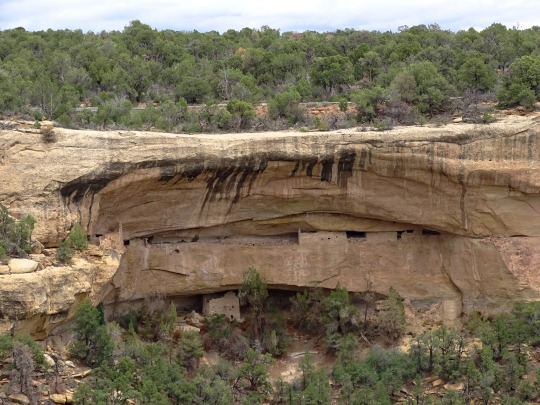
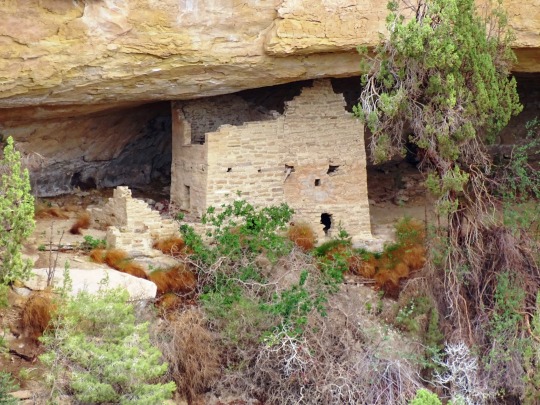
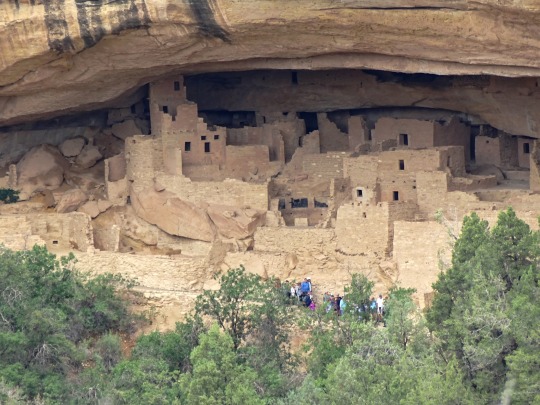



Cliff Palace, Mesa Verde National Park (No. 13)
Cliff Palace is the largest cliff dwelling in North America. The structure built by the Ancestral Puebloans is located in Mesa Verde National Park in their former homeland region. The cliff dwelling and park are in Montezuma County, in the southwestern corner of Colorado, in the Southwestern United States.
Tree-ring dating indicates that construction and refurbishing of Cliff Palace was continuous approximately from 1190 CE through 1260 CE, although the major portion of the building was done within a 20-year time span. The Ancestral Puebloans, also known as Anasazi, who constructed this cliff dwelling and the others like it at Mesa Verde were driven to these defensible positions by "increasing competition amidst changing climatic conditions". Cliff Palace was abandoned by 1300, though debate is ongoing as to the cause. Some contend that a series of megadroughts interrupting food production systems was the main cause.
Cliff Palace was rediscovered in 1888 by Richard Wetherill and Charlie Mason while they were looking for stray cattle.
Source: Wikipedia
#Cliff Palace#Mesa Verde National Park#cliff dwelling#Ancestral Puebloans#Colorado#UNESCO World Heritage Site#ancestral puebloan archaeological site#archaeology#Montezuma County#original photography#desert varnish#travel#vacation#tourist attraction#landmark#architecture#landscape#countryside#summer 2022#USA#Mountain West Region#tree#cliff
211 notes
·
View notes
Text
Preliminaries: War of the Utility Wares!
Most pottery you find in archaeological sites isn't painted. Most pottery is unslipped, undecorated utility ware - with the assumption that "utility" typically here means "cooking over a fire." Sometimes grain storage. Usually cooking, though.
It doesn't mean they can't be beautiful in their own right. And one of my friends is working on a dissertation which among other things argues that "surface treatments" like incising and corrugation should be considered "decoration" too, when usually in archaeology "decorated" means "painted." There were lots and lots and lots of types of utility wares. Some were plain. Some were gorgeous.
So this is a Preliminary Round - four different styles traditionally called utility ware will go up against each other... only two will move on to represent utility wares in the final bracket.
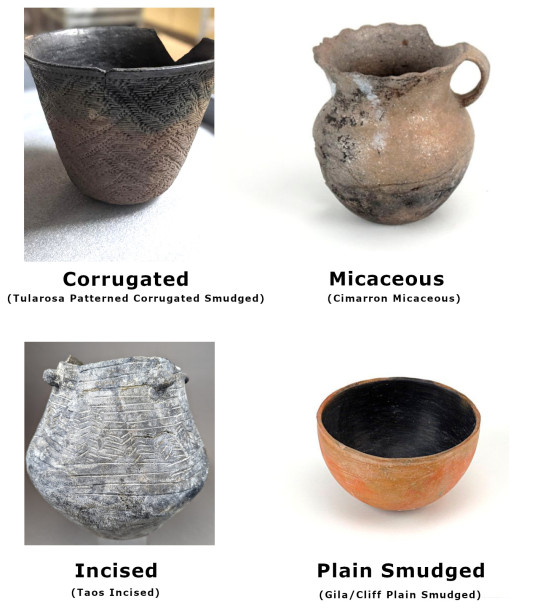
Vote for your favorite: More information about each is under the cut:
Corrugated
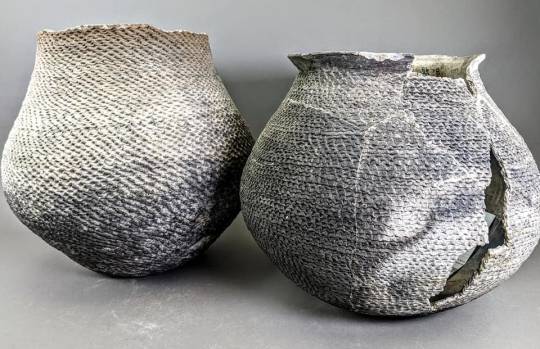
Mesa Verde Corrugated jars. Southern Colorado, AD 1100-1300.
There are SO many different types of corrugated pottery; if I listed them all we'd be here all day. However, they all have commonalities: They were primarily (though not exclusively) made in the Mogollon cultural region, primarily (though not exclusively) plain and unpainted, and primarily (though not exclusively) used for cooking.
In this region, potters don't use pottery wheels. Pots are hand-built, typically from coil-building: using many thin coils to build up the shape of the pot. For most pots, those coils are scraped smooth as they're still wet. But for corrugated pots, those coils are only scraped smooth on the inside. The outside coils are instead pressed using a tool or the potter's thumb to make a patterned, scaled, or woven texture. Corrugation, due to its association with cooking pots, is not typically considered "decoration" by archaeologists, but it creates beautiful and captivating patterns.
Micaceous

Micaceous Bowl with Etched Flowers. Made by Virginia Romero (Taos Pueblo, 1896-1998).
In northern New Mexico, there are golden-red clays with a lot of sparkly mica in them. The mica self-tempers the clay, and creates a lovely shimmering effect when you see the pots in person. There's evidence of polished micaceous pottery being made as early as the 1300s, but it really took off as a popular type of cooking ware in the 1500s-1600s. In this time, it was made primarily by norther Pueblos like Taos, Picuris, and Nambe, but was enthusiastically adopted by the Jicarilla Apache as well, who have strong social ties to those northern Pueblos. Cimarron Micaceous, the handled jar seen above the cut, is a 1600s Apache micaceous pottery style.
Micaceous pottery is still extremely popular with Native potters today. Some of it is as an art form, with many different experiments in structure and style, but some people still swear by cooking in these micaceous clay pots - beans just taste better when cooked in clay instead of metal!
Incised

Taos Incised jar sherd. Northern New Mexico, AD 1050-1300.
Incised ware is SO underappreciated. However I am also biased because for the past three or four summers I have worked on an archaeology project in the Taos area and we find so much of it.
Incised designs are carved into the wet clay. Usually, these are not painted. Incised pottery is very common on the Great Plains, but less so in the Southwest. The Northern Pueblos like Taos and Picuris, however, has long-standing interactions with Plains groups, trading corn and buffalo hides, holding market days together, Picuris and Taos people fleeing the Spanish invasion to live in Kansas with their Apache allies. This is also visible in the sharing of pottery styles in the northern Pueblos, where incised ware is common. Parallel lines that mimic corrugation, chevrons, and herringbone patterns are common.
Plain Smudged
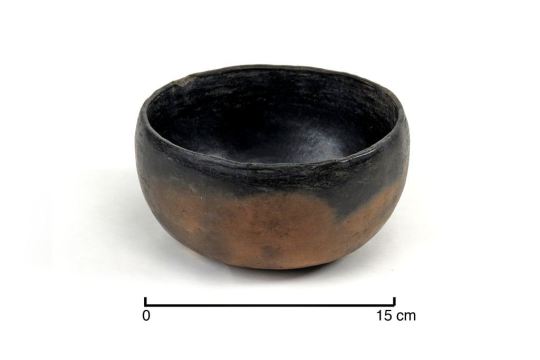
Reserve Plain Smudged, Mogollon Highlands, AD 600-1250.
As I described in my pottery jargon post, "smudging" is a method of getting that shiny black interior during the firing stage. During firing, different levels of oxygen will cause the minerals in the clay to turn different colors. An oxidized environment (high oxygen) turns iron-rich clays red; a recducing atmosphere (restricted oxygen) plus an infusion of carbon turns them black. To smudge a pot, the inside is polished, and then in the firing pit is covered with ash and charcoal. This puts a lot of carbon on the surface, and blocks the oxygen from reaching it. When the pot comes out of the fire, the part that was covered in charcoal will be shiny black. This was another pottery style particularly popular in Mogollon areas.
47 notes
·
View notes
Photo
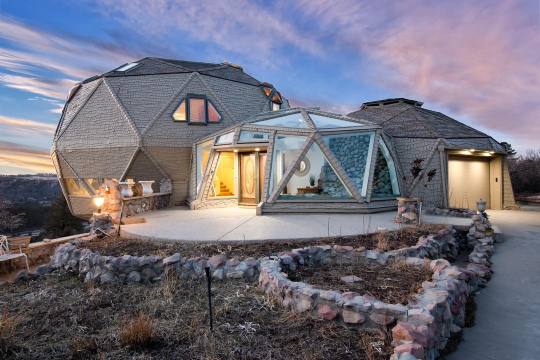

Here we have a home that was built in 1988, but looks a lot newer. It’s in Castle Rock, Colorado, has 3bd. 4ba. and they’re asking $1M, someone must’ve applied for a mortgage, b/c they are accepting back-up offers.
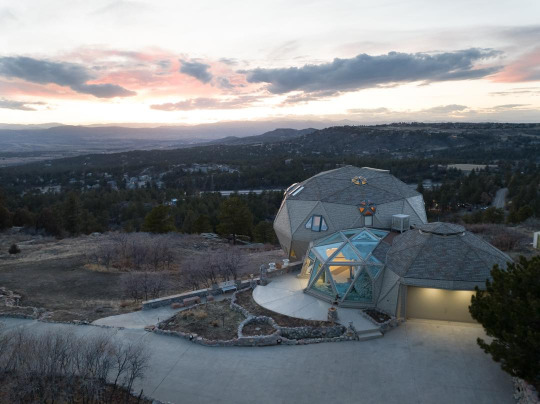
There’s also a $40 annual HOA fee.

Interesting entrance. The doors look like they belong on a more traditional home.
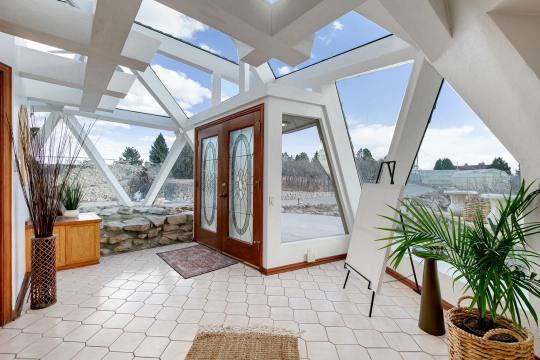


The entrance hall is very large.

There’s a water feature here.



The living room is like a loft with a rounded half-wall and a pretty fireplace.


The dining room also has a nice fireplace and there’s a counter that is open to the kitchen.


I can’t decide if the kitchen looks dated- it does look kind of 80s.

Spacious main bd. has a cute little fireplace and a large built-in sofa.

The bath is pretty cool.

Looks like 2 home offices and maybe a planter in the middle.

I don’t know what this is, but it looks like a blocked off fireplace.

The secondary bd. is very nice with built-in shelves and desk,


The baths are beautifully done.

There are a lot of built-in places to sit. Up these stairs, however-

Is this cool roof top terrace.

There are 2 greenhouses on the property.

A beautiful gazebo.
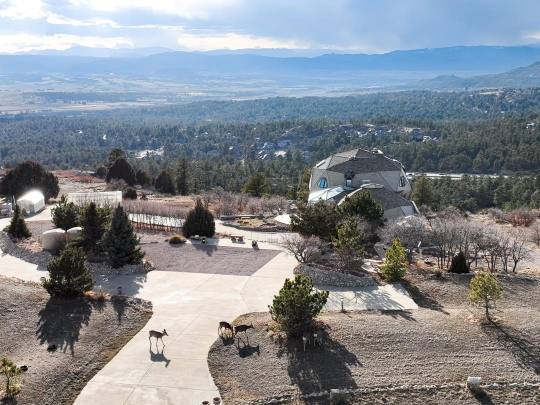
And, look at the deer! There’re 3.94 acres of land.

I like it.
https://www.zillow.com/homedetails/5147-Mesa-Dr-Castle-Rock-CO-80108/13483434_zpid/
227 notes
·
View notes
Text
My Post-BCS Kim Wexler Headcanons
-Kim isn't penniless, she made an okay wage at the sprinkler company and has a good bit of money saved up from her days working for HHM, Mesa Verde, and S&C. She actually shoved her lawyer money into a separate account and refused to use it during the Florida years out of guilt, getting by only on her Sprinkler salary.
-Cheryl does end up suing Kim, but it's settled pretty quickly. Kim gives Cheryl her savings from her lawyer days, which is used to help set up a legal aid grant in Howard's name. Howard gets a positive and long lasting legacy, and Kim gets to know that her money went towards her dream of providing free quality legal help to people in need. Win-win for everyone, and Kim isn’t forced into poverty.
-The part of Kim that still thinks she needs to punish herself feels bad about this, as that is what she would have wanted to do with the money even without the lawsuit and it feels more for her than for Howard. But Cheryl seems satisfied, and ultimately Kim knows that helping people is more important than whatever guilt she still struggles with. Kim also remembers how Howard told her that he wanted to make a difference in the world before being pressured into joining HHM by his dad, so it feels like something he would have wanted and liked.
-Her affadavit being public knowledge makes it pretty much impossible for her to become a licensed attorney again, and she never tries. However, she does become heavily involved in the legal world, eventually moving from volunteer work to a full time paid position as a paralegal doing lots of pro bono legal aid work. Despite not being an attorney, she finds her work very personally fulfilling.
-She forms some good and meaningful friendships through her work. She can be herself around others again, a far cry from what we see of her interactions with others in Waterworks.
-She dumps Glenn pretty much immediately after the events of Saul Gone. She dates here and there, with a couple more serious relationships, but doesn't remarry (nobody ever really lives up to Jimmy).
-Kim visits Jimmy several times a year, and they otherwise keep in close contact through letters/phone calls. They are still each other's #1 person, and both of them relish the time they get to spend together, despite Jimmy being in prison. They can't be together like they used to be, but the love is still there and that's what matters most.
-Kim eventually starts going to therapy to help her deal with her guilt over Howard's death. Like Jimmy with Chuck, she'll always carry that cross, but she gets better at not letting it consume her.
-Occasionally, when planning out a trip to go see Jimmy, Kim will book her return flight home from Albuquerque. The drive down there from ADX Montrose is 6 hours, but it's an enjoyable one that passes through the Colorado mountains and then the familiar New Mexico desert. She'll visit places that hold memories of the past, usually memories she shared with Jimmy. She tries to avoid running into former acquaintances, and never ever returns to their old apartment. The last thing she does before her flight home is pay a visit to Howard's grave.
-This trip eventually starts to feel very important to Kim, and she keeps it up over the years. Taking that time to physically return to her past makes it easier to put it behind her and focus on her future instead.
-Kim gets a cat. No deeper meaning, I just think Kim with a cat would be adorable and she should do it. She names him Atticus.
#kim wexler#post-bcs#better call saul#bcs spoilers#Kim deserves happiness and healing#without erasing the themes of the show and the point behind her and Jimmy’s endings
5 notes
·
View notes
Text
Plant-Based Inks & The BigOne Art Marker
Last month, I met with Laurie from Bluebird Gardens to test plant-based dyes that could be used on fabric AND paper using Neuland’s BigOne Art markers.
Success!
Yes, they wrote beautifully on both.

Do you know how long we have to wait for these plants to grow, get harvested, turn into dye, in order to be used? Sometimes just under a year, with some plants, it could take several years. And think of all the love and labor that goes into their nurturing and care.
While I am learning to be in the moment…
It’s quite easy AND necessary when lettering. These plants are teaching me patience. And we all know the value of being patient. :)
Here are a few photos from a workshop in Laurie’s garden last summer.

Laurie offers workshops both at her farm near Mesa Verde and at Durango Sustainable Goods. So if you are near or visiting Southwest Colorado, please check out her offerings at https://www.bluebirddyegardens.com.
Which leads me to…
What does radical self care look like?
Click here to download my Radical Self-Care Checklist.
. . .
If you would like to learn more about the biggest brush nib marker in the world, click here. I've also created a free online course about it too here.
5 notes
·
View notes
Text
Let's talk about Colorado's 3rd congressional district.
Lauren Boebert and Adam Frisch are locked in a ridiculously close election in a race a lot of people are watching very closely. Seeing Boebert unseated would be a huge win and may turn out to be crucially important in a midterm the Dems (shockingly) still have a chance to take the House in. It has been razer thin for several days, and over a long lapse in reporting, Fisch lead by less than 70 votes with ~90% of the vote in.
As of right now, Boebert holds a lead of 1,136 votes with about 98% of the votes counted. It might take until next Thursday for the remaining votes to be counted and a winner declared, as there are an estimated 5,898 votes still to be counted. This does not include overseas and military votes or ballots that need to be cured, but we'll get to that.
First lets address a question many people have:
Why is this taking so long?
The short answer is, it's not. The main reason it seems to be taking longer than most races is directly related to how close the race actually is. See when news media "call" races, they are actually just projecting the winner based on the possibilities in remaining math. If it becomes reasonably impossible for a certain candidate to win, they call the race. The projected loser may even concede at this time. But that is not an official result, nor does the counting stop at that point. Just like in CO-3, counting continues following the guidelines set by the state to tabulate an official result. This race only hasn't been called yet because with the remaining votes, either candidate can still win. Colorado also has a gold-standard level election system.. so we can expect counting to take a little longer due to such a high percentage of ballots there being mail-in (Colorado sends ballots to all voters by default)
As far as the timeline goes, this is not abnormal.
So what are Adam Frisch's odds of winning and how can we calculate them? This is a more complicated answer, but I'll do my best to keep it simple.
As I said, there are an estimated 5,898 votes remaining to be counted. The bulk of them (2,365) come from Pueblo County which favors Frisch by 3.3%, and another large share (700 votes) comes from Pitkin County which favors Frisch by 29.2%
If all math followed those numbers, this would be a pickup of 565 votes for Adam Frisch. Boebert also has an advantage in Mesa County of 7.8% where there are 726 estimated votes remaining. This would give her a pickup of ~112 votes. In the remaining counties where there are less than 300 votes remaining to be counted, we can estimate that the votes would mostly cancel out, with a slight edge for Frisch.
All the math with these smaller counties included points to Frisch coming up short by about 770 votes (this would still fall in the range of an automatic recount).. but this does not account for all the outstanding ballots.
There are still an indeterminate number of absentee ballots from overseas and military votes to count, in addition to provisional ballots that may have been cast on Election Day (Colorado has same-day voter registration, so these are uncommon).. and there is also a curing period for ballots that may have had a mistake and need to be verified (such as someone forgetting to sign the envelope when mailing their ballot in)
We can expect the military and overseas ballots to favor Frisch. Not only does the military slightly lean Dem as it is, Southern Colorado is home to a lot of active duty Air Force which has an even more liberal tilt than the military broadly. As for the cured ballots, it's hard to say.. but my intuition tells me Democratic voters would be more energized and likely to fix their ballots by the deadline (there's also a lot of outreach being done to help people through this process, something I imagine the Boebert camp will be less capable of doing)
Are there any guarantees the remaining votes will follow the trend exactly? Of course not. They may favor one candidate or the other to a greater degree than the averages represent. Without knowing how many outstanding ballots there are from the military, overseas, and cured counts.. it is fundamentally impossible to know how this race will turn out. What I can say is not to expect many updates between now and next week. This one is going to come down to the wire, and whatever candidate ends up winning will do so by a very tight margin. No matter the result, I expect a recount will be triggered leading us to even more waiting to find out the official results.
My suggestion to everyone is to be patient and let this process play out. I have no reason to be worried about the results of this race, which is already much closer than anyone expected it would be going into Election Day. After all, CO-3 is an R+6 district. The race being this close is something no one expected.
Here's a chart with all of the data I discussed:

#politics#democracy#lauren boebert#adam frisch#colorado#congressional elections#2022 midterms#house of representatives#election#vote#counting
48 notes
·
View notes
Text

Every Record I Own - Day 766: Donna Summer Love to Love You Baby
I've gotten a lot of mileage out this album over the last few years.
During the first summer of the pandemic, my husband and I took a road trip out to western Colorado to stay at an old cabin my grandfather built up on Grand Mesa. We took scenic routes the whole way, dipping down to Nevada to drive Highway 50 (the "loneliest road in America"), cruising around the canyon country of the four corners region, and driving the "million dollar highway" between Silverton, Durango, and Ouray. Our interactions with other people were minimal. It often felt like we were the last two people on earth.
It was a lot of driving, and we wound up listening to a lot of SiriusFM satellite radio in the car. In particular, we listened to a lot of the Studio 54 station, which is dedicated to disco. This choice was partially to appease the husband, but the endless pulse of disco also helped keep us awake and upbeat. It was also an attempt on my part to overcome some of my prejudices against that particular style of music, and I was excited whenever I'd find a track that resonated with me.
Somewhere along the trip, we heard Donna Summer's "Love to Love You Baby." Time already felt elastic during the pandemic, and that malleability became even more pronounced as we blazed across the open road and endless expanse of the Great Basin of the western US. But to have a seventeen-minute disco tune slowly unfurl and blossom over the airwaves as countless yellow lines passed beneath us effectively pushed us into a dream-like territory.
Love to Love You Baby was the first album to be released in the US by "Queen of Disco" Donna Summer. The album was produced by Italy's "Father of Disco" Giorgio Moroder and its steady groove, ebb-and-flow instrumentation, and provocative vocals proved to be a hit on the dance floor even if radio stations were averse to its long run-time and explicitly sexual nature.
For me, the allure of "Love to Love You Baby" is that it reminds me of the patient build-up of a classic side-spanning prog rock composition or the hypnotic repetition of one of Can's long-form jams. The song takes you on a journey across the entirety of side A. It's the perfect vibe for a road trip soundtrack.
Side B of Love to Love You Baby is a bit more traditional. "Full of Emptiness" is a solid torch song. "Need-A-Man Blues" provides a more succinct brand of throbbing disco. But the real gem of side two is "Pandora's Box"--a gospel-inflected soul song that deserves to be in constant rotation on FM radio.
Love to Love You Baby got played a lot during that summer. I ordered a lot of records online during the pandemic, but I figured I could find a copy of this LP in just about any used record store for a couple of bucks, so I would just wait until stores re-opened to pick up a copy. I would wind up waiting nearly two years before finding it in the wild. I was in Bellingham WA with SUMAC on one of my first post-lockdown tours when I popped into Everyday Music before soundcheck. Donna Summer was at the top of my shopping list. Unfortunately, they didn't have a copy in their racks. But as I was looking for other titles in their bins, I suddenly heard a familiar combo of hi-hat and sultry vocals come on the shop's speakers. I ran to the counter and asked if the album they were playing was for sale. The worker was stunned. "This was just something we pulled from a box of records someone left outside overnight," he explained. He pulled the copy of Love to Love You Baby off the turntable and handed it to me.
"No charge," he said with a smile.
Love to Love You Baby had been in heavy rotation during a long period of isolation, and now the actual LP serves as a kind of talisman to mark the end of that two-year stretch.
11 notes
·
View notes
Text

These reviews are too funny . . .
Here are 10 times when people did not enjoy their trip to an iconic Colorado attraction, enough so to leave a report on Google Reviews.
Pikes Peak: "Scary horrible experience [...] It feels like you may die, due to the lack of guard rails. The views are pretty, but much better when not scared for your life. [...] I haven't looked up the death toll from this yet. One entire family was stranded on the mountain due to burning up their clutch. I wouldn't recommend," 1 star, Maria M
The Great Sand Dunes National Park: "We thought this would be a fun family trip. Sand got everywhere. It was super hot, and we couldn't find a single refreshment stand. Cell phone coverage was horrible," 1 star, Jeffery F.
Garden of the Gods: "The views are amazing, the 19th century ban on alcohol is absolutely ridiculous," – 1 star, Micah P.
Rocky Mountain National Park: "Too many rocks! Too many mountains! The mountains were too big. Didn't see any wildlife. A total lack of fast food options," 1 star, Alex F.
Million Dollar Highway: "Absolutely beautiful, absolutely insane if you're used to safety measures such as guard rails," 4 stars, LaDonna C
Maroon Bells: "Saw no bears. Slightly disappointed," – 2 stars, Dan P.
Mesa Verde National Park: Went here, but couldn't enter the park too far as I have a great fear of drop-offs!!! So if you have a fear of heights and roads with sheer drop offs right at the side of your car... don't attempt this park," – Debbie B.
Hanging Lake: "Hot. Can't drink the stream water. Need a reservation. Busy. Only on entrance to parking. Long and steep hike. No cell reception. Go to Utah or Wyoming," 1 star, BreckBear.
Black Canyon of the Gunnison: "Interesting, but disappointing" – 3 stars, Frank F.
Red Rocks Park and Amphitheatre: "Went to get a funnel cake well before the end of the concert and was told the concession stand is closed. He sent me across the plaza to another food stand and they said they don't make funnel cakes and are also closed," 1 star, Nick M
[Jerry Downs]
7 notes
·
View notes
Note
Top 5 pieces of pottery!
Heck YEAH! There are so many excellent pots in the world.
This delightful Tonto Polychrome bowl from Gila Pueblo, eastern Arizona, late 1300s. It’s everybody’s favorite at the museum for a reason.

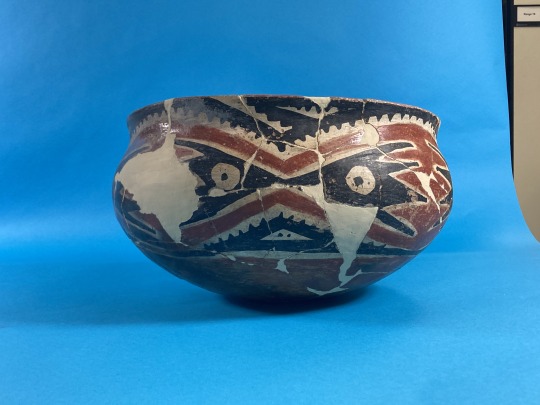
2. Late Minoan Marine Style pottery, and specifically the famous octopus flask (Palaikastro, Crete, 1500s BCE). I love how there was a whole stylistic movement to just paint sea creatures on fancy pots at this point in time.

3. This particular Mesa Verde mug, southern Colorado, 1200s. There are a LOT of mugs from the 1100s-1200s in the style, but I like the swirly pattern on this one. A friend of mine has a replica of it. I drank tea out of it when I was dog-sitting for her.

4. The Chaco Canyon cylinder jar collection from Pueblo Bonito, Central New Mexico, 900s-1000s. Makes the top five for their archaeological interest—chocolate residue was found on the inside, showing that chocolate was imported up from Mexico to New Mexico and the people in Chaco Canyon were drinking chocolate out of these jars probably in a similar ritual manner to how Maya people were doing it at the same time down in Mexico. After the 1100s cylinder jars fell out of fashion and chocolate was drunk from mugs instead. (Similar to the one above.)

5. Brithawon’s shit-ass kylikes (Pylos, Greece, 1200s BCE). Love this guy.

also special shout-out to a new love, the Hellenistic Greek eyebrow fish plates.
hmm maybe I should do a part 2 with modern/art pottery also... there are also some excellent pots that are not hundreds of years old
36 notes
·
View notes
Text

Cliff Palace, Mesa Verde NM
The Ancestral Puebloans, also known as the Anasazi, were an ancient Native American culture that spanned the present-day Four Corners region of the United States, comprising southeastern Utah, northeastern Arizona, northwestern New Mexico, and southwestern Colorado.[1] They are believed to have developed, at least in part, from the Oshara tradition, which developed from the Picosa culture. The people and their archaeological culture are often referred to as Anasazi, meaning "ancient enemies", as they were called by Navajo. Contemporary Puebloans object to the use of this term, with some viewing it as derogatory.[2][3]
The Ancestral Puebloans lived in a range of structures that included small family pit houses, larger structures to house clans, grand pueblos, and cliff-sited dwellings for defense. They had a complex network linking hundreds of communities and population centers across the Colorado Plateau. They held a distinct knowledge of celestial sciences that found form in their architecture. The kiva, a congregational space that was used mostly for ceremonies, was an integral part of the community structure.
Archaeologists continue to debate when this distinct culture emerged. The current agreement, based on terminology defined by the Pecos Classification, suggests their emergence around the 12th century BC, during the archaeologically designated Early Basketmaker II Era. Beginning with the earliest explorations and excavations, researchers identified Ancestral Puebloans as the forerunners of contemporary Pueblo peoples.[1][3] Three UNESCO World Heritage Sites located in the United States are credited to the Pueblos: Mesa Verde National Park, Chaco Culture National Historical Park and Taos Pueblo.
2 notes
·
View notes
Text
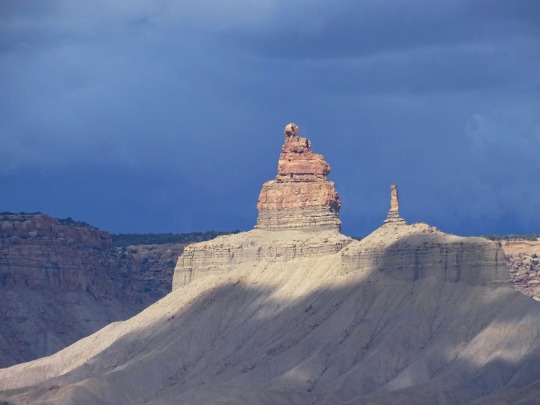


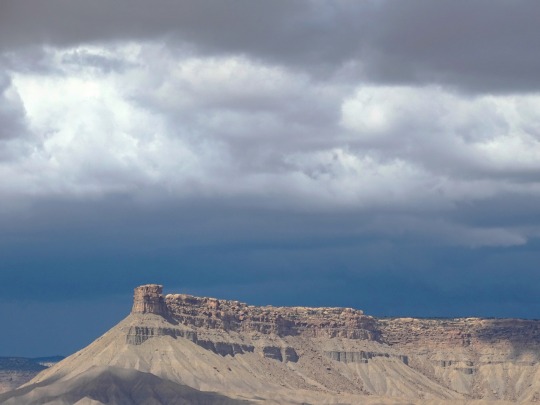
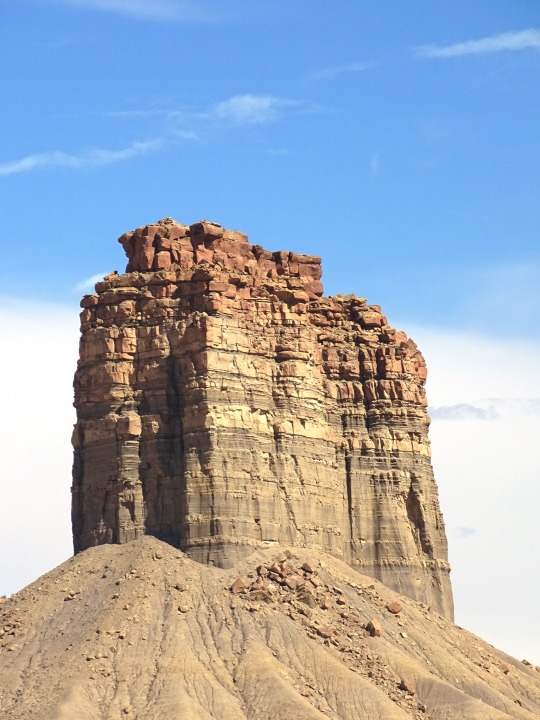

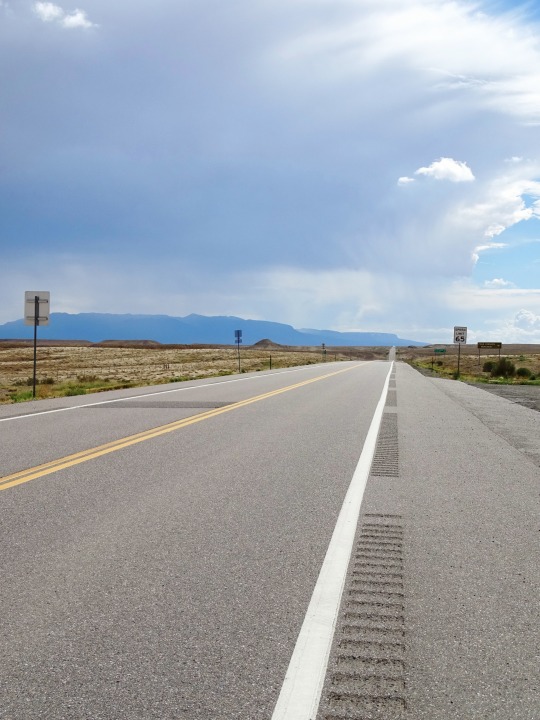


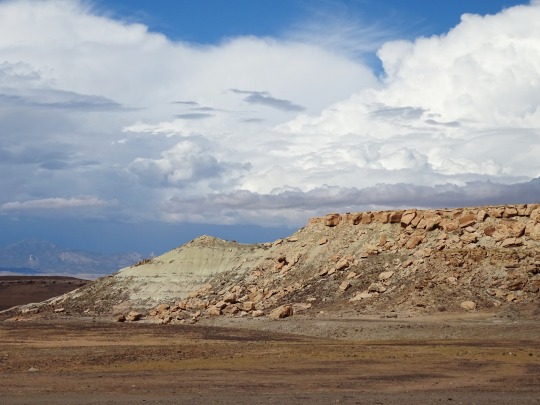
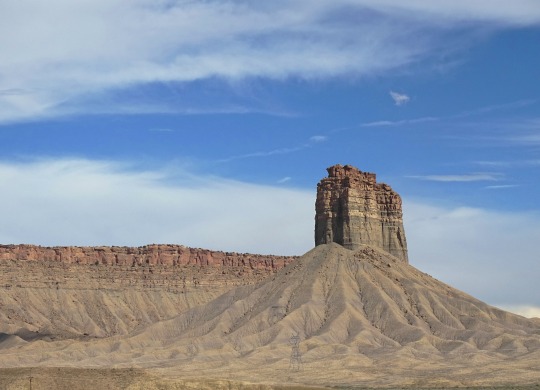
Montezuma County, CO
Montezuma County is a county located in the U.S. state of Colorado. As of the 2020 census, the population was 25,849. The county seat is Cortez.
Mesa Verde National Park, Canyons of the Ancients National Monument, Yucca House National Monument, and Hovenweep National Monument preserve hundreds of ancient Amerindian structures, including the famous cliff-dwellings, found in the county. Montezuma County is also home to most of the Ute Mountain Indian Reservation, home of the Weeminuche Band of the Ute Nation, known as the Ute Mountain Ute Tribe, with its headquarters at Towaoc.
Source: Wikipedia
#Chimney Rock#Kaan Paachihpi#Montezuma County#Highway 160#desert#travel#original photography#vacation#tourist attraction#landmark#landscape#clouds#light and shadow#USA#summer 2022#Southwestern USA#Mountain West Region#sand#rock formation#Colorado
16 notes
·
View notes
Text
A Colorado woman who operated a funeral home pleaded guilty to fraud this week after being accused of stealing and selling bodies and body parts, officials said.
The U.S. Attorney’s Office for the District of Colorado confirmed in a statement Tuesday that Megan Hess, 45, pleaded guilty to one count of mail fraud and aiding and abetting. The charges come after she “devised and executed a scheme to steal the bodies or body parts of hundreds of victims, and then sold those remains to victims purchasing the remains for scientific, medical, or educational purposes,” according to the statement.
The body parts and bodies were sold without the consent of the deceased’s family, officials confirmed.
Hess, who also worked with her mother, Shirley Koch, “met with families seeking cremation services, offered to cremate the decedents’ bodies, and provided the remains to the families,” according to a Department of Justice bulletin. They also charged a minimum of $1,000 for “cremations that often did not occur.”
Hess created a nonprofit organization in 2009 called Sunset Mesa Funeral Foundation, which did business as Donor Services and which officials called a “a body broker service.” Donor Services’ income primarily came from harvesting and marketing “purportedly donated human remains, such as heads, torsos, arms, legs, or entire human bodies,” according to an indictment in the case.
According to the indictment, records maintained by Hess and Koch contained forged signatures and claims that a donation was authorized, or no donor authorization at all.
Hess and Koch received hundreds of thousands of dollars for remains sold, according to the indictment.
Officials added in the bulletin that, in some instances where families did agree to donate limited remains, Hess and Koch sold beyond what was authorized. They also delivered remains “to families with the representation that the (cremated remains) were that of the deceased when, frequently, that was not the case.”
They also shipped bodies and body parts of people who tested positive for infectious diseases, such as Hepatitis B and C and HIV, though they told buyers the people did not have diseases.
Hess, in U.S. District Court in Grand Junction, Colorado, on Tuesday, said, “I exceeded the scope of the consent and I’m trying to make an effort to make it right,” The Daily Sentinel reported.
“I’m taking responsibility,” she added.
The scheme began in 2010 and continued until 2018. Prosecutors have recommended a sentence of 12 to 15 years. She also had faced additional charges, but they were dropped as part of her plea.
11 notes
·
View notes
Text
Electrical and Roofing Contractor Data Scraping
If you’re looking for an electrical and roofing contractor online, it’s about to be much simpler. That’s because many of these contractors usually have information on their websites about the services they provide. It’s important to find a Contractor Data Scraping Service or software that can help you get everything you’re looking for in one place.
Electrical and Roofing Contractor Data Scraping Services
This offer is perfect for any contractors looking to collect data from local businesses. We will provide you with the most up-to-date information about your industry and save you time in the process. Updates come out weekly, and we make it easy to order custom reports. Moreover, this offer provides an automated system that scrapes data from Home Advisor's directory, so it's easier than ever to get accurate information.

Contractor Data Scraping
The DataScrapingServices team employs a variety of techniques in data scraping, including web scraping, third-party services, and APIs. Our top priority is customer success, and with this in mind, you’ll find affordable rates for every budget. You can also rely on us for support when it comes to gathering key contact information about those in your network or for individual use. We know that accuracy is important when recording key contacts, so we utilize our data-scraping expertise to collect this information quickly.
List of Data Fields
DataScrapingServices is an expert in scraping data from various websites using contractor data scraping services.
Contractor Name
Contact Name
Street Address
City
State
Zip
Phone
Fax
Email
Website
Business Category
Review
Business Ratings
Popular Contractor Directories List
We extract contractor data from the following list of directories:
Angi.com
Buildzoom.com
Contractorleadshq.com
Everycontractor.com
Easyleadz.com
Fountain.com
Homeadvisor.com
Homestars.com
Houzz.com
Manta.com
Merchantcircle.com
Superpages.com
Thumbtack.com
Yelp.com
Popular Contractor Service Category
Architect
Contractors
Dentists
Doctors
Electricians
General Contractors
Home Builder
HVAC Repair
Physicians
Plumbers
Real Estate Agent
Repair Solar Panels
Roof Cleaning
Roofing Contractors
Wedding Vendors
Why choose us?
With our Contractor Data Scraping Services, you’ll be able to obtain the latest Contractor data from any website or directory, regardless of whether it’s on a mobile or desktop device.
Using our Contractor data scraping services, you can collect information on potential contractors.
With our Contractor data scraping services, you can collect home contractor, local contractor, and roofing contractor data for your real estate market conditions.
Best Contractor Data Scraping Services in USA: New York, Los Angeles, California, Chicago, Illinois, Houston, Texas, Phoenix, Arizona, Philadelphia, Pennsylvania, San Diego, Dallas, San Jose, Austin, Jacksonville, Ohio, Indianapolis, Indiana, Charlotte, North Carolina, San Francisco, Seattle, Washington, Denver, Colorado, DC, Oklahoma, El Paso, Boston, Massachusetts, Detroit, Michigan, Memphis, Louisville-Jefferson County, Kentucky, Baltimore, Maryland, Milwaukee, Wisconsin, Albuquerque, Tucson, Fresno, Sacramento, Kansas City, Missouri, Mesa, Atlanta, Georgia, Omaha, Nebraska, Colorado Springs, Colored, Raleigh, Long Beach, Virginia Beach, Miami, Oakland, Minneapolis, Tulsa, Bakersfield, Wichita, Arlington, Texas, Nashville-Davidson, Tennessee, Oklahoma City, Fort Worth, Columbus, Portland, Oregon, Las Vegas, Nevada.
If you are looking for Contractor Data Scraping Services and Electrical and Roofing Contractor Data Scraping then email us at [email protected].
Website: datascrapingservices.com.
Skype: nprojectshub
1 note
·
View note